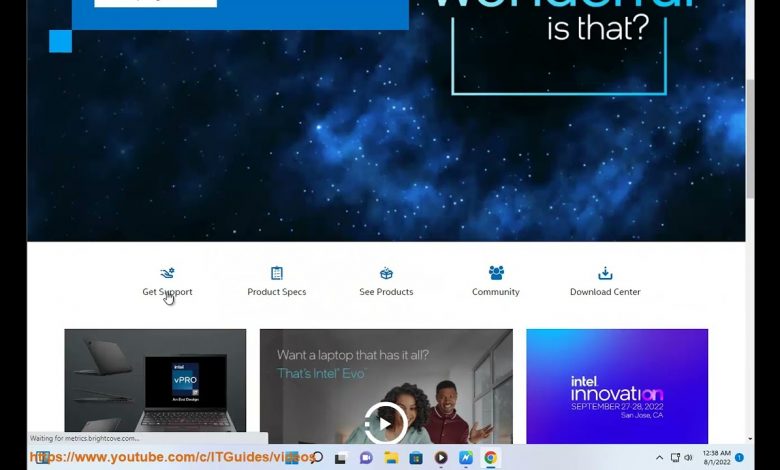Download Intel USB 3.0 Drivers for Windows (2024 updated)

Here’s how to Download Intel USB 3.0 Drivers for Windows. Run Avast Driver Updater@ https://www.anrdoezrs.net/click-7952654-14577796 to keep all your device drivers up-to-date effectively.
i. Intel USB 3.0 Drivers are a type of software that allows your computer to communicate with USB 3.0 devices. They are necessary to install in order to use USB 3.0 devices with your computer.
Intel USB 3.0 Drivers are available for download from the Intel website. To download the driver, you will need to know the model number of your computer. Once you have downloaded the driver, you can install it by following the instructions on the installation wizard.
After the driver is installed, you should be able to connect USB 3.0 devices to your computer and use them normally.
Intel USB 3.0 Drivers support the following features:
* Transfer data at speeds up to 5 Gbps.
* Connect up to 127 USB devices to your computer.
* Use USB devices that require a lot of power, such as external hard drives.
Intel USB 3.0 Drivers are compatible with the following operating systems:
* Windows 10
* Windows 8.1
* Windows 8
* Windows 7
* Windows Vista
* Windows XP
If you are having problems with your Intel USB 3.0 Drivers, you can try the following solutions:
* Restart your computer and your USB devices.
* Update the driver.
* Contact Intel support.
Here are some of the pros and cons of Intel USB 3.0 Drivers:
**Pros:**
* **Faster data transfer speeds:** USB 3.0 is much faster than USB 2.0, with transfer speeds up to 5 Gbps. This is ideal for transferring large files, such as videos or photos.
* **More power:** USB 3.0 devices can draw more power than USB 2.0 devices, which is important for devices such as external hard drives.
* **Backwards compatibility:** USB 3.0 devices are backwards compatible with USB 2.0 ports, so you can use them with older computers.
**Cons:**
* **Not all computers have USB 3.0 ports:** If your computer does not have USB 3.0 ports, you will need to purchase an adapter in order to use USB 3.0 devices.
* **USB 3.0 cables are more expensive than USB 2.0 cables:** If you need to purchase new cables to use with your USB 3.0 devices, you will need to pay more for USB 3.0 cables than USB 2.0 cables.
* **USB 3.0 devices are not as widely available as USB 2.0 devices:** USB 3.0 devices are still relatively new, so they are not as widely available as USB 2.0 devices.
Overall, Intel USB 3.0 Drivers are a great choice for anyone who wants to take advantage of the faster data transfer speeds and increased power of USB 3.0 devices. However, it is important to be aware of the potential drawbacks, such as the cost of USB 3.0 cables and the fact that not all computers have USB 3.0 ports.
ii. Here are some of the known bugs in Intel USB 3.0 Drivers:
* **USB 3.0 ports not detected:** Sometimes, the Intel USB 3.0 driver may not detect your USB 3.0 ports. This can happen if you are using an older computer or if your computer’s BIOS is not up to date. To fix this problem, try updating your BIOS or contact your computer manufacturer for help.
* **USB 3.0 devices not working:** Sometimes, the Intel USB 3.0 driver may not work with certain USB 3.0 devices. This can happen if the device is not compatible with the driver or if there is a problem with the device. To fix this problem, try updating the driver or contact the device manufacturer for help.
* **USB 3.0 devices not working at full speed:** Sometimes, the Intel USB 3.0 driver may not allow USB 3.0 devices to work at their full speed. This can happen if the driver is not installed correctly or if there is a problem with your computer’s hardware. To fix this problem, try reinstalling the driver or contact your computer manufacturer for help.
* **USB 3.0 devices disconnecting and reconnecting:** Sometimes, the Intel USB 3.0 driver may cause USB 3.0 devices to disconnect and reconnect randomly. This can be a very annoying problem, and it can be difficult to fix. To try to fix this problem, you can try updating the driver, disabling USB selective suspend setting in power options, or disabling USB root hub in device manager.
If you are experiencing any problems with your Intel USB 3.0 Drivers, you can try the following solutions:
* **Restart your computer and your USB devices.** This often fixes minor problems with the driver.
* **Update the driver.** Intel regularly releases updates for the driver, which can fix bugs and improve compatibility. You can update the driver from the Intel website.
* **Contact Intel support.** If you are still experiencing problems, you can contact Intel support for help.
Learn more@ https://www.youtube.com/c/ITGuides/search?query=Drivers.
